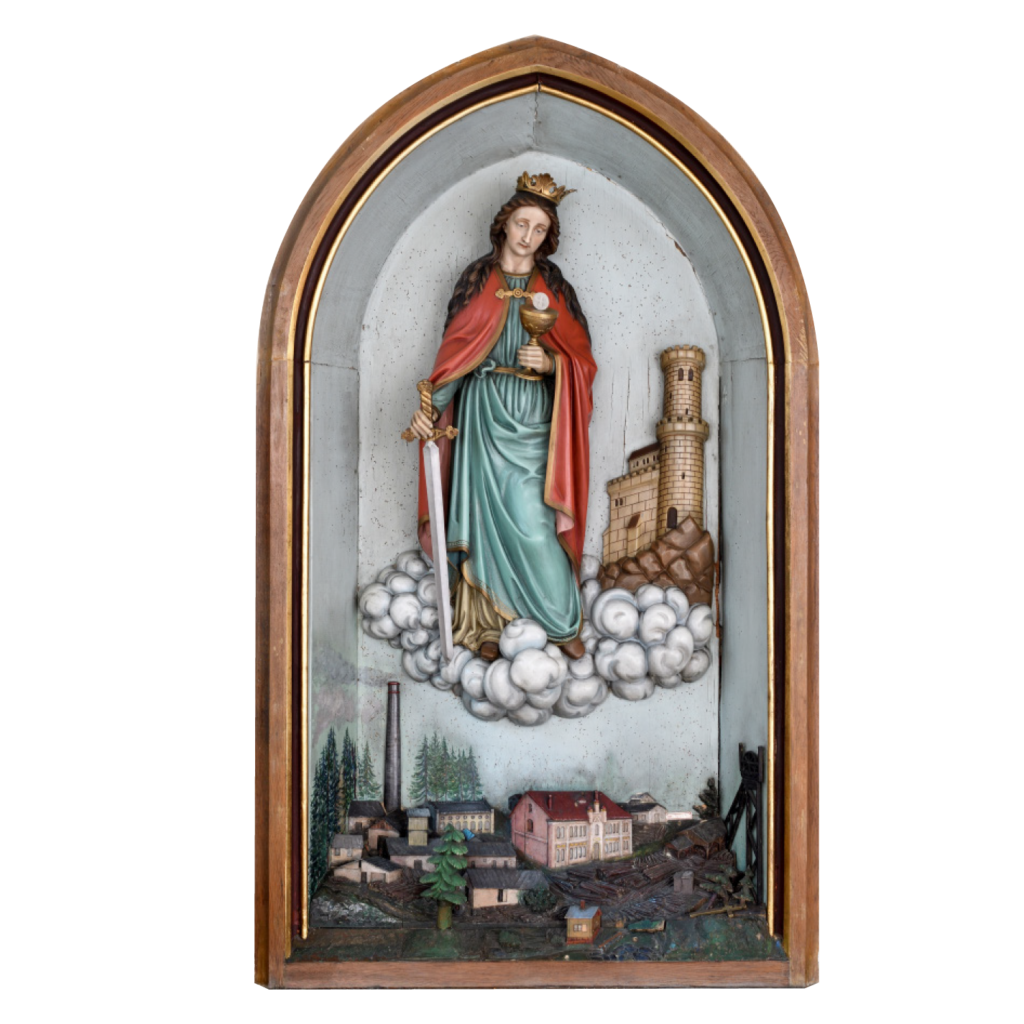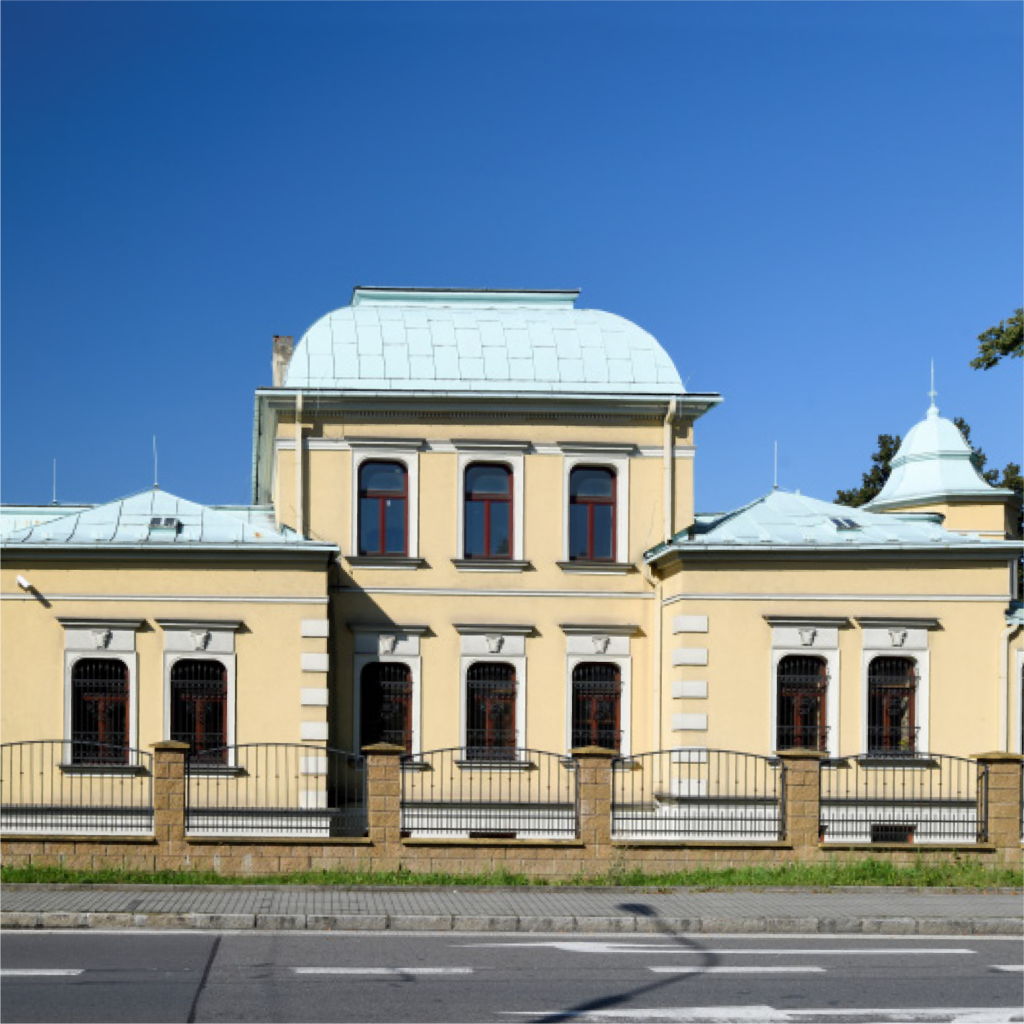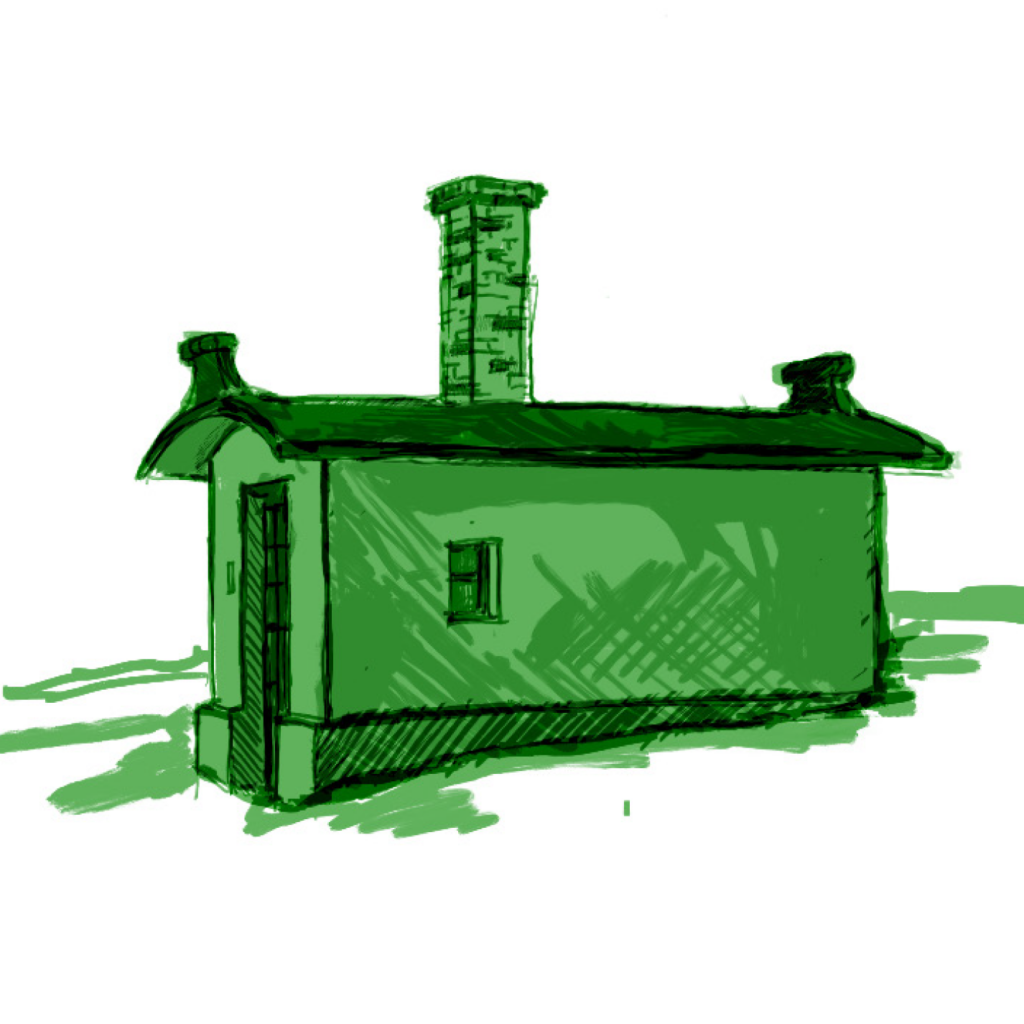For more than two centuries, mining activity in the Ostrava region has indelibly shaped its current landscape. Mining towers, mine complexes, slag heaps, and mining settlements are still part of the city and its genius loci. However, there are also many places whose connection to the mining past has almost disappeared from people’s awareness. You can follow the footsteps of such (un)known monuments on another one of Ostrava’s cultural trails.

1. The Mining Altar in Hošťálkovice
The mining devotion in the Ostrava region is associated with Saint Barbara and, since the second half of the 19th century, also with Saint Procopius. Painted wooden altars dedicated to the patrons of miners were a part of all Ostrava mines. They were often placed in the mining guild halls, where miners could pray before descending underground. A mining altar was also located in the guild hall of the Oskar mine (renamed Lidice since 1952) in Petřkovice.

It was composed of a wooden sculpture of Saint Barbara and a relief of a mine. The altar was transferred to the Church of All Saints in Hošťálkovice in 1957, where it can still be found in the side chapel to this day.
GPS (mapy.cz)
2. The Miner’s Aviary
Since the second half of the 19th century, many miner households in the colonies had small cages with canaries. These small birds were not just kept for pleasure; miners also took them underground, where their behavior alerted to increased concentrations of dangerous gases. The popularity of canary breeding among miners led to the establishment of miner breeding associations in Ostrava already at the beginning of the 20th century and later to several public aviaries. In Přívoz, in a park adjacent to Svatopluk Čech Square, miners built an aviary in 1959.

Thanks to the care of Ostrava’s canary breeders, it remains the sole reminder of this mining tradition in our region to this day.
GPS (mapy.cz)
3. The Sawmill Shed of the Mining Railway
In 1863, regular operations began on the Mining Railway, a railway aimed at facilitating the transportation of coal from the mines in Ostrava to the Přívoz railway station. The original track ran from Přívoz to Michálkovice with six branches to the mines in present-day Slezská Ostrava. Over the years, it was extended all the way to the Karviná region, and the network of branches was further expanded. To meet the needs of the Mining Railway, a sawmill shed was built in 1911 near the present-day Ostrava main station. It served as a depot for ten locomotives, featuring a water tower, a coal crane, and a turntable.

The legacy of the Mining Railway is now preserved by the Silesian Railway Society, which organizes regular excursions along the track for the public.
GPS (mapy.cz)
4. The Höfer Villa
Near the Silesian-Ostrava Town Hall, in an area formerly known as Baranovec, there is a spacious villa. It was built shortly before the beginning of World War I for Hans Höfer. Hans Höfer entered the service of Count Wilczek in 1901 as an engineer at the Trojice Mine. Thanks to his abilities, he became the director of the entire Wilczek coal mining industry in 1912, where he remained until 1938. Höfer’s father also frequently stayed in the villa until his death in the mid-1920s.

This geologist and leading Austrian expert in oil mining had known Count Wilczek since the early 1870s when he participated in a polar expedition to the Barents Sea funded by the Count.
GPS (mapy.cz)
5. Chestnut Alley at Salm Mine and the Cross
Chestnuts were an integral part of Ostrava’s mines in the past, and chestnut alleys often adorned the roads leading to the gates of mining complexes. One of the preserved old alleys can be found on the outskirts of the mining colony of Salmovec in Slezská Ostrava. It leads from the former factory pub to the old cross and one of the many Ostrava’s gas vents that provide ventilation for methane from the old mines. In its place, in the early 1950s, the Ignát mine of the Salm-Reifferscheidt princely mining company was founded. When mining in the mine was terminated in 1885, Prince Salm had the shaft building converted into a mining chapel dedicated to St. Barbara and planted chestnuts in its surroundings.

At the turn of the 19th and 20th centuries, the chapel was served by Hugo Vavrečka, a native of Hranečník and the grandfather of Václav Havel. After World War II, the chapel fell into disrepair, and in the 1970s, it was demolished. The only remaining reminder was an old cross that stood at the entrance to the chapel.
GPS (mapy.cz)
6. The Mining Bakery in Hranečník
At the turn of the 19th and 20th centuries, mining bakeries were characteristic features of the local mining colonies. Mining companies built several dozen of them in these colonies. The bakeries served mining families, who collectively heated the bread oven and then placed their dough into it, each family preparing their dough at home. The mining bakery in Hranečník was part of the Jan Maria mine colony and is likely the last remaining structure of this type in Ostrava that has retained its original character.

That’s why the Pestré vrstvy (Colorful Layers Association) chose this particular building to open it to the public.
GPS (mapy.cz)
editors / Ilona Rozehnalová, Martina Němcová
author of the texts / Tomáš Majliš
photographs / Roman Polášek
2023 © Fiducia